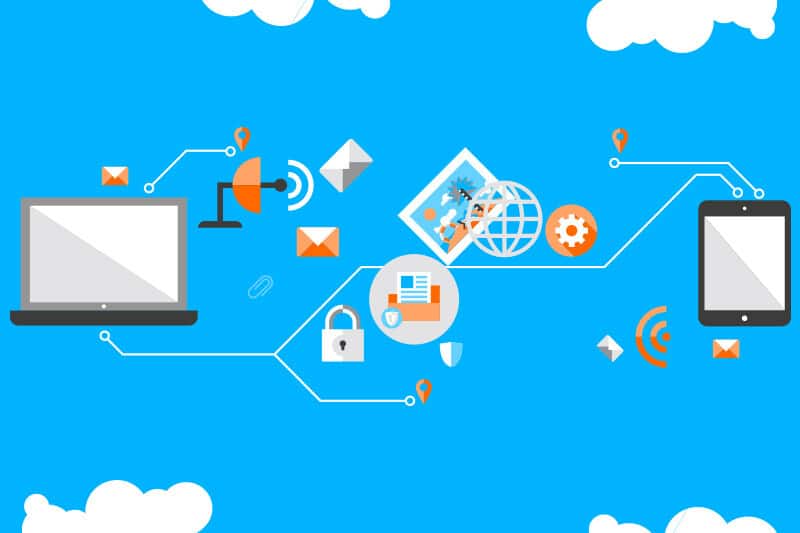News and inspiration for entrepreneurs and creatives, plus updates on new developments at Hatchwise.
Home / Blog Posts / Ways To Keep Your Business Safe
Hatchwise is #1 in Creative Custom Logo Design and Eyecatching Marketing Material Design.

Ways To Keep Your Business Safe
When a startup is taking off, and before it breaks even, your focus is easily pulled in different directions. There is a lot to do, from getting new business to retaining the ones you get. The one thing that most startups end up neglecting is security. Whether your startup is a brick-and-mortar store or an online store, you need to prioritize your digital safety.
With the COVID-19 pandemic, more people have been forced to work from home, and hackers have devised new tricks to get data. Before you secure your startup, you need to be aware of the different cyber risks facing startups.

Ransomware
Ransomware attacks happen to both startups and better-established companies. With ransomware, the attackers take charge of your devices such as computers or mobile devices, servers, and data by encryption. The attack means you cannot access your data without the hackers giving you a decryption key, but you have to pay the amount they demand, mostly in
Bitcoin.
This year, Forbes predicted a 300% spike in cyber threats, mostly ransomware, which would mainly target startups. Ransomware attacks on startups would go up to $300,000 from $100,000. The sharp hike would lead to more businesses shutting down or filing for bankruptcy.
Phishing and Malware
Phishing is another attack that is as common as ransomware. As old as the scam is, millions of people still get duped every day of the years. Phishing involves sending a fraudulent email to a target victim, pretending to be from a legit source such as a business colleague or bank. The email typically contains a link or attachment that redirects you to a fake website that proceeds to ask for personal information such as usernames or passwords. This information is later used to hack into your accounts. The links may also contain malware, such as Trojan Horses or viruses that may infect your computer or network.

Data Breaches
Data breaches occur when hackers infiltrate your system and leak confidential data to the public. Data breaches can mean ruin to a startup by data and reputation loss, and financial destruction caused by lawsuits filed against the business by clients for confidentiality breaches.
How to mitigate cyber attacks
There are several ways that you can reduce cyber-attacks. Some examples include:
Risk assessment
Assess your business’s security needs by doing a simple risk assessment that identifies risks to your business in five simple steps:
● Identifying the threats
● Decide who and what is at risk
● Evaluate the threats and which measures you need to take
● Record and implement the measures
● Review the assessment and update it necessary

Strong passwords
The use of strong passwords has almost become a cliché in cybersecurity; to an extent, people do not bother effecting it anymore. Using a strong password ensures that attacks such as brute-force do not crack your password with ease. The general rule of thumb for passwords is to
make it easy for you to remember, but something a hacker cannot guess. Make the password unique and use upper and lowercase letters, as well as symbols and numbers.
Use a VPN
A Virtual Private Network (VPN) creates a secure tunnel via which your device connects to the internet. A VPN makes it hard for a hacker to discover your location as it hides your IP address and location. If you download a VPN on your device, you never have to worry about sending
your data in plain text. Ensure you encrypt your traffic and minimize any threats from hackers trying to eavesdrop on your communication.
Two-factor authentication
With a secure password, you can also use the two-factor or multi-factor authentication. The two-factor authentication uses your password alongside a one-time passcode, which is sent to a trustworthy device like a mobile phone. You can also opt for biometric authentication such as the retina or fingerprint scans, which are impossible for a hacker to replicate.
Install anti-malware and anti-virus software
Once you click on attachments or links in phishing emails, the malware installs on your devices. Installing anti-malware and anti-virus software on your network and devices such as routers,PCs, laptops, and mobile devices ensures you keep malware and viruses at bay
Train your employees
When you practice best practices in cybersecurity, you minimize any risks to your network. Train
your employees as well as yourself in case you do not have any employees on how to spot scams before they can cause any harm. Caution them on clicking on links or downloading attachments that look suspicious.
Conclusion
Protecting your startup is critical. Cyber threats have become too prevalent in businesses that do not prioritize cybersecurity. Take precautions and nurture your startup to maturity.
- Rosie
- July 13, 2020

